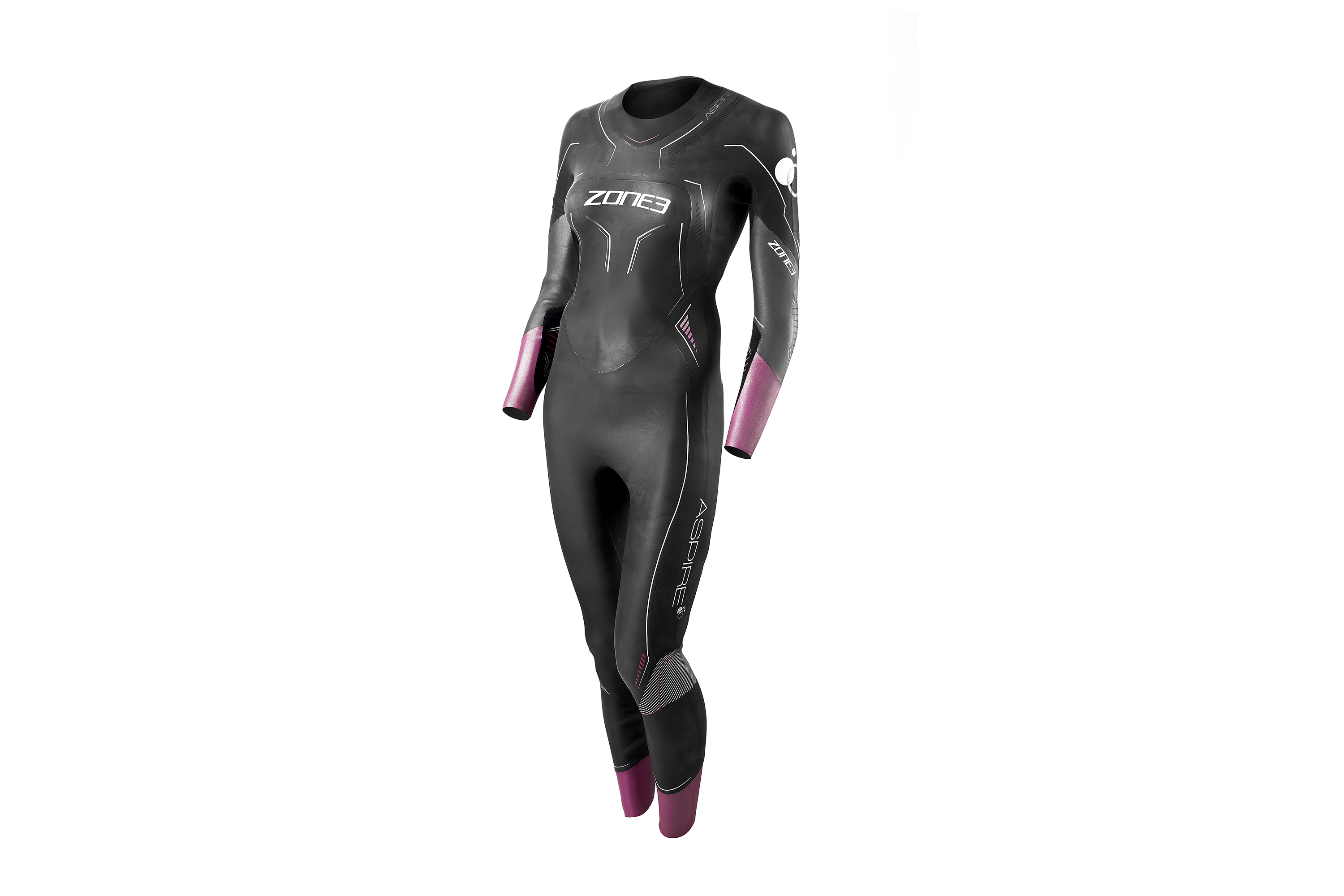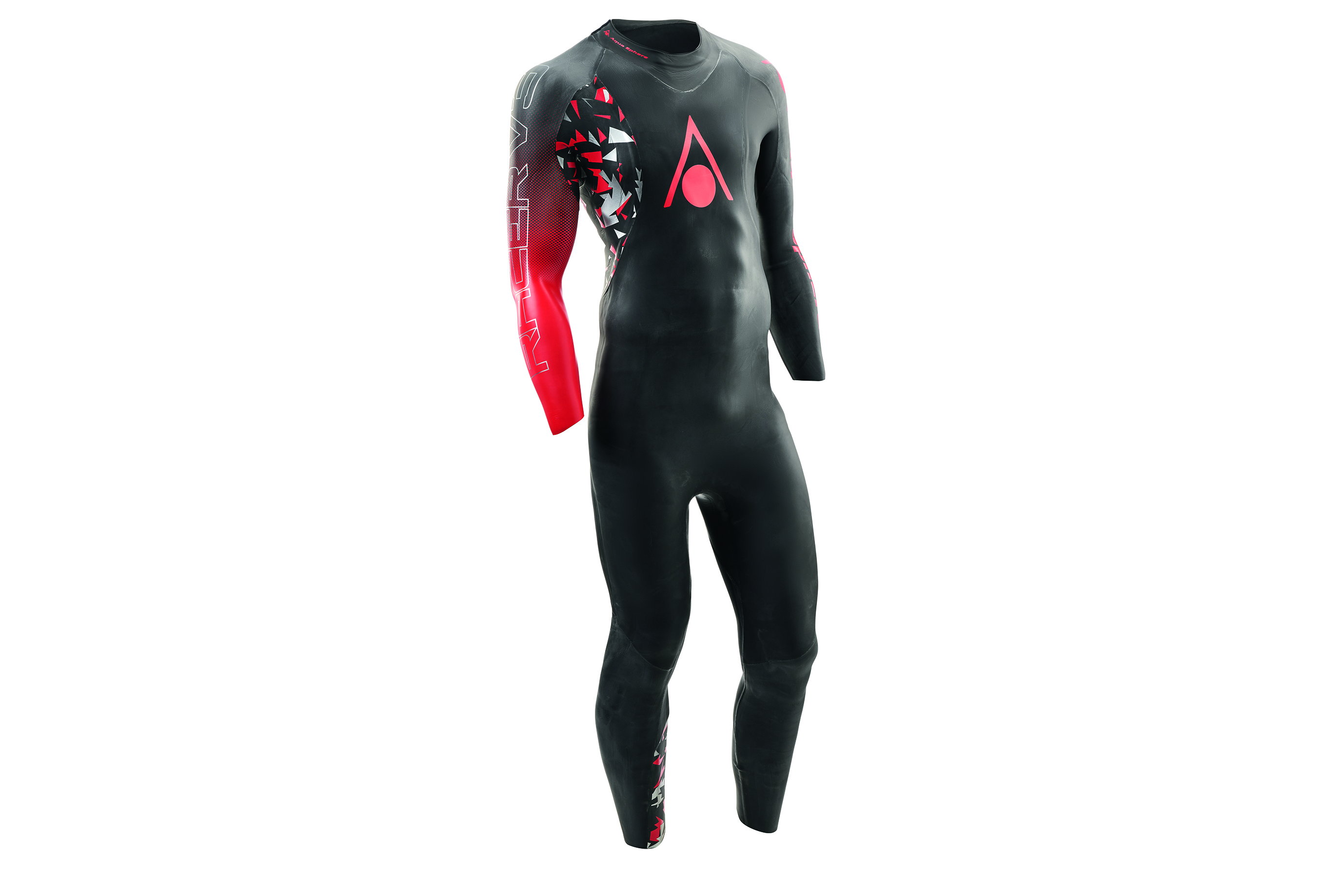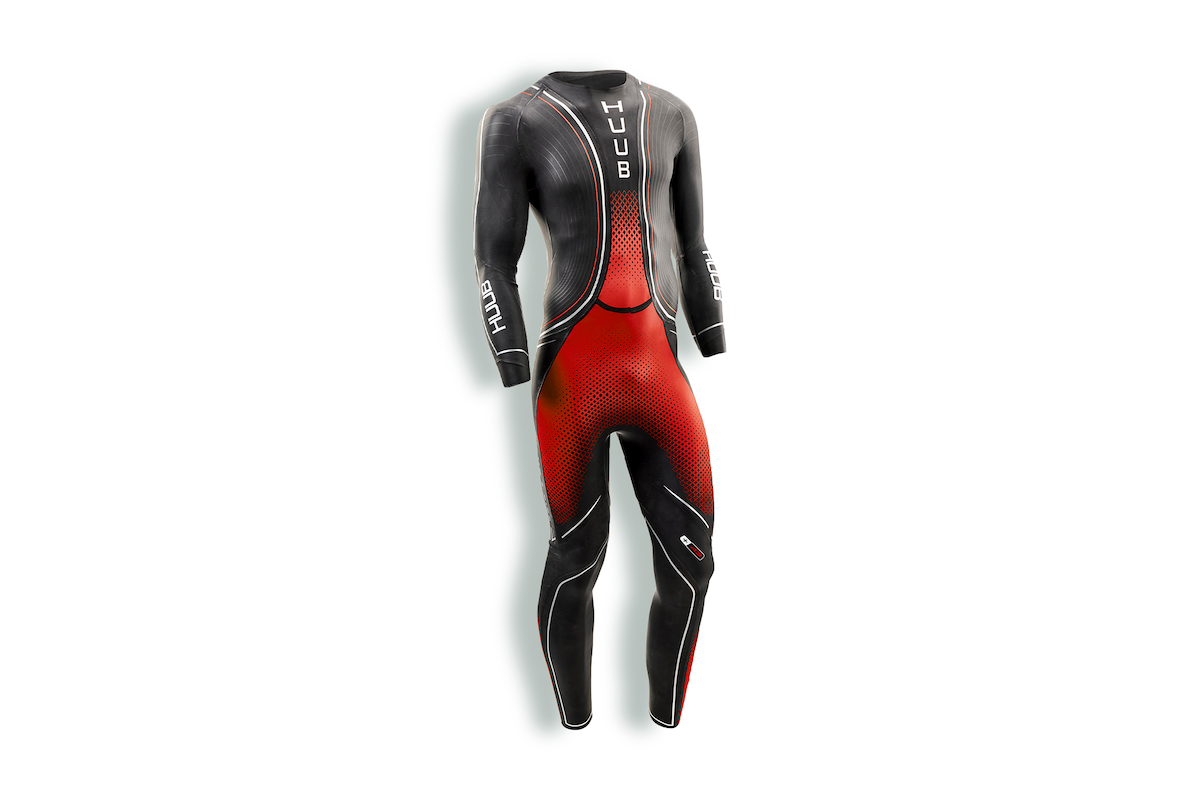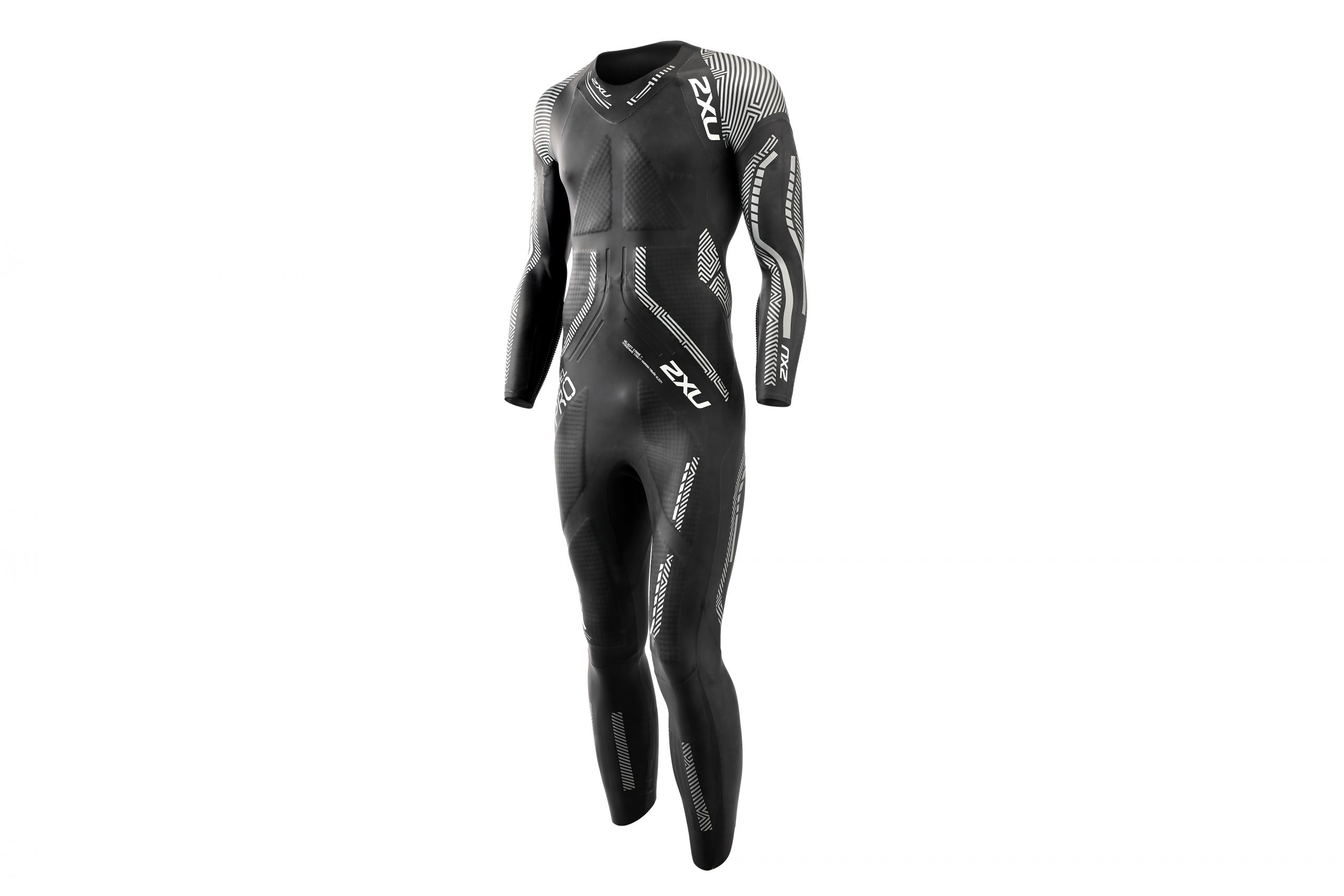Best wetsuits for triathlons in 2025
Need a new triathlon wetsuit to help you swim faster? Here are the best triathlon wetsuits out on the market, all independently reviewed by our experts

The triathlon wetsuit is one of triathlon’s big ticket items and one of the most crucial triathlon buys you’ll ever make. To help you make that purchase, here’s our list of the best triathlon wetsuits on the market today.
Alternatively, if you’re new to the sport, or don’t want to spend so much money, take a look at our list of the best cheap triathlon wetsuits.
Best triathlon wetsuit reviews
Jump to…
What to look for when buying a triathlon wetsuit?
The fit of your triathlon wetsuit is paramount. The wetsuit needs to be snug rather than loose. However if it’s too tight, your swimming experience won’t be pleasant and movement could be restricted. if it’s too loose it’ll allow water into the suit, which will seriously slow you down.
You also need to be truthful with yourself about your swim level. If you’re a beginner you might need one that will help you maintain your swim position in the water.
- How thick should my tri wetsuit be?
- What’s the difference between a triathlon wetsuit and a surf wetsuit?
- How to store a wetsuit
- How to mend a wetsuit tear
- How long should a triathlon wetsuit last?
Why you can trust 220 Triathlon
Our team of experts rigorously test each product and provide honest, unbiased reviews to help you make informed decisions. For more details, read how we test and rate products.
The best mid-range triathlon wetsuits reviewed
Zone3 Aspire
Buy now for men from Zone3 | Buy now for women from Zone3

- $795 / £449
We always know when a suit is successful in these tests if it becomes one we automatically reach for swim after swim, even when testing is done – and such was the case with the new Aspire.
Fitting well with none of the water ingress I’ve previously seen in Zone3 suits, this is a really solid, easy-to-use suit.
Offering a nicely-balanced buoyancy profile, including 1mm neoprene across the shoulders, 2mm in the arms and 3mm on the core and legs, this is a suit that gave enough buoyancy in the water to enhance my swimming, but without making me feel restricted or overly-floaty.
The silky-smooth lining made the suit a cinch to pull on – and more importantly remove – while the neckline was comfortable.
Personally, I’m not fans of the girlie pale pink and the price feels a touch high against the Huub, but those are quibbles on a really solid suit.
220 Triathlon verdict
Zone3 has created a real crowd-pleaser here. A great swim and a comfortable experience. Score: 86%
Pros
- Balanced buoyancy profile
- Easy to pull on and remove
Cons
- Not a fan of the colour
- Priced a little high
Orca Athlex Float

- $349 / £209
The Orca Athlex Float stands out from the crowd due to its high elasticity across the upper body.
Made from Yamamoto 39 with extra flexibility built into the material along the arms, shoulders and back, the suit has some of the best range of movement of any I’ve experienced on test.
Some swimmers may find the arms a little thin in cold waters, but I had no problem in the British spring and summertime. The only downside is that they’re a bit slower to whip off in T1, though the YKK zipper is quick and easy to use.
I found the low neckline adds to the unrestricted freedom in the water, with Super Composite Skin (SCS) hydrodynamic coating helping me glide through the swim stroke.
There’s plenty of lift in the legs thanks to 4.5mm neoprene leg panels, without it being overly aggressive, and I was still able to kick a little without breaching the surface.
220 Triathlon verdict
Buoyant and flexible for a natural-feeling swim, with heaps of tech for only £200. Score: 92%
Pros
- Incredible value
- Impressive range of movement
Cons
- Arms may be a bit thin if you really feel the cold
- Not that quick to get off in a rush
Yonda Spook

- $343 / £269
Designed as an entry-level suit to encourage first-timers to enjoy outdoor swimming in safety, the Yonda Spook is one of the more expensive ‘budget’ options we’ve tested recently, but it comes with a high-quality build to match.
As graduated Yamamoto neoprene is cleverly placed to enable swimmers to do both front crawl and breaststroke in the water, I felt lifted and unrestricted through all the strokes I tried.
A big safety tick for me is the fluro blue arms, making me visible in all conditions and feeling safer in wild swim spots, though the 1.5mm LSQ Green Nano jersey-like material may not be warm enough for winter dips.
The standard 3mm core and 2mm Yamamoto 38 cell skin legs aren’t the thickest on test, but provided enough lift for this tester. Like the Van Rysel SD suit, I found that some kick is needed in order to remain in a streamlined position in the water.
220 Triathlon verdict
Most visible on test, with good-quality build, plus compatible with any swim stroke. Score: 88%
Pros
- Good value option
- Unrestrictive feel
- Arms aid vibility to enhance safety
Cons
- May not be enough buoyancy for some
Huub Aegis X 3:3

- $589.99 / £399.99
Huub describes the Aegis X as a face-lifted version of one of their most popular suits, and having swum in many from the brand over the years, I appreciated the retention of the X-O Skeleton design, which gives great fit and body position in the water.
I also loved the stretchy blue panels on the hips, which meant a curvier figure could easily get a good fit around the lower body.
I’ve previously loved racing in a 3:3 women’s Huub suit (the Atana, no longer available) and the Aegis X gives a similar flexible, yet supportive feel with a silky lining offering a quick and comfortable experience getting it on and off.
In the water I felt supported and buoyant, but not too high. I’d have liked a tiny bit more stretch on the shoulders for longer swims, but it’s a minor comment on a great suit that I’d happily reach for all year round.
220 Triathlon verdict
Great suit at a decent price with some good tech – plus it looks great and feels good in the water. Score: 88%
Pros
- Great fit
- Silky lining makes the suit quick to remove
- Buoyancy profile was supportive, but not too corrective
Cons
- More stretch would have been appreciated on the shoulders
Aqua Sphere Racer V3

- $549.99 / £558
Sometimes you get what you pay for, and that’s the case with the Racer V3, as it instantly feels among the most supple and classiest triathlon wetsuits on test.
The top tech includes 40-cell Yamamoto, SCS coating for hydrodynamics and ultra-thin 1.5mm upper panels, which provide the best flexibility of the men’s mid-range suits.
The single red arm sleeve is a bit Michael Jackson in Thriller, but it’ll get you spotted among the mass of noir in the swim and it adds to a design that I think is one of the best here.
Elsewhere, the 4mm and 5mm combination of neoprene thickness in the core and back provide a high but not excessive level of buoyancy, while the quick-release angle tabs made it one of the swiftest to remove here.
I did regularly have trouble getting the zip up by myself, but it’s hard to find fault elsewhere.
220 Triathlon verdict
Superior performance, striking visuals and top-end tech with supple neoprene. Score: 90%
Pros
- Incredibly supple
- Great visual design
- Very quick to remove in transition
Cons
- Hard to zip up on your own
Zone3 Vision
Buy now for men from Zone3 | Buy now for women from Zone3

- $575 / £399
The Vision is a regular in our budget wetsuit tests, but a recent price jump sees it enter the mid-range collection from now on.
While the Vision can’t compete with the Aqua Sphere in terms of feel and flexibility, and the 2mm shoulder panels are noticeably less supple than the 1.5mm used elsewhere, the loftier company does reinforce just what a good value suit this is.
There’s top-draw tech such as 39-cell Yamamoto neoprene, SCS coating for hydrodynamics and an environmental boost with a limestone-derived (over petroleum) construction, along with race-friendly features like arm and leg cuffs for easy removal.
Buoyancy is reasonably high due to the 5mm thicknesses of neoprene and Aerodome air bubbles between the layers, and warmth in the 10°C water was one of the best of the bunch.
220 Triathlon verdict
Not outdone by the pricier suits and an entry/mid-level winner. Score: 86%
Pros
- Arm and leg cuffs make removal an easier affair
- Plenty of buoyancy for sinkylegged swimmers
Cons
- Not as supple as some competition
- Higher price than previously
Huub Varman

- $799 / £599
The clever folk at Huub rarely rest on their laurels and, with the Varman, they believe they’ve launched a revolution in wetsuit development.
With their trademark +43 system, Huub claim to have a material that offers 43% more buoyancy than standard neoprene. Testing certainly backs up the theory with plenty of uplift around the hips.
The thinner panels, especially around the arms, meant there was no real restriction of the stroke. Huub’s team have created an ‘Arms Neutral’ design that delivers on its promise to allow freedom and rotational movement.
The only criticism is that the neck was a little tight out of the water, but less of an issue once swimming. An interesting suit with the potential to shake up the market.
220 Triathlon verdict
New tech has produced a good wetsuit but with a big mid-range price tag. Score: 91%
Pros
- Lots of buoyancy in the right places
- Unrestricted movement for upper body
Cons
- Neckline a little tight at first
Best top-end triathlon wetsuits reviewed
As you’re eyeing up a wetsuit from this selection, it’s likely you’ll either have a swim background from your youth, or have worked hard in adulthood to hone your skills and are emerging from the swim placed inside the top 10% in the majority of your triathlon events.
Here’s our reviews of the best triathlon wetsuits money can buy…
Zone3 Vanquish X
Buy now for men from Zone3 | Buy now for women from Zone3

- $995 / £699
The Vanquish X is an evolution of Zone3’s popular Vanquish, featuring sparkly new tech such as its Titanium Alpha structure that adds a titanium alloy coating to the neoprene to improve warmth by a claimed 40%.
This won’t affect flexibility, says Zone3, and my swim experience supported that claim.
There’s an impressive 11 different materials used in the construction of this suit, ranging from 0.3mm on the arms to 5mm in the core and upper legs.
Intriguingly, there’s no difference between the buoyancy profiles for the men’s and women’s version, so our female tester felt particularly buoyant – potentially a little too much so.
The neckline is a little deeper with a more refined shape than the Vanquish, which made for a chafe-free swim.
I’ve always appreciated the lining in Zone3 wetsuits, and the new Silk X lining here is no different, proving to be silky smooth against the skin as the name suggests.
I think the improvements are more evolutionary than revolutionary compared to the Vanquish, though, maintaining similar characteristics but with a sizeable price hike.
See our full Zone3 Vanquish X review for more.
220 Triathlon verdict
Solid all-rounder with great tri-specific features. Score: 88%
Pros
- Comfortable and chafe-free
- Great flexibility in the upper body
Cons
- May prove too buoyant for some women
- High price tag
Orca Apex Flow

- $975 / £719
Orca has revamped its range for 2022, with the Apex Flow directly replacing the Predator.
The Flow range is recommended for stronger swimmers with some technical imperfections who want more lift, while the Apex Flex (replacing the outgoing Alpha) is best for the teacher’s pet in your swimming group.
Of the suits on test, this felt the most like a second skin as soon as I put it on, offering complete freedom of movement to support my swim stroke.
The neckline is super comfortable and it just feels buttery smooth, with Orca’s Exo-Lift and Aerodome technologies providing plenty of buoyancy in the legs and lower body without feeling bulky or lifting me too much.
The only real reason the Apex Flow loses marks is the high price compared to rivals; but if you’re seriously competitive and want freedom with plenty of added buoyancy, it’s the cream of the crop in this group test.
220 Triathlon verdict
Sublime flexibility, comfort and buoyancy combined with a touch of leg lift to aid position. Score: 92%
Pros
- Feels like a second skin
- Perfect for song swimmers that need a little more lift in the lower body
Cons
- Not cheap
Sailfish Ultimate IPS Plus 3
- Buy for women from Swim Inn (£725.49)
- Buy for men from Swim Inn (£685.99)

- $1,050 / £925
The Ultimate IPS from Sailfish was last tested in this mag in 2022. This version added a new Hip Rotation Panel to help with hip flexibility and generate a more powerful kick.
Combined with a very stretchy liner and 4.5mm buoyancy in the chest, hips and thighs with a 1.5mm arm thickness, it’s aimed at faster swimmers who want maximum mobility to support their technique.
This is a suit that really works with you and feels incredibly flexible in the shoulders, and the buoyancy levels, plus that extra freedom in the hips was ideal for this (male, strong swimmer) reviewer’s technique.
I felt powerful and efficient during long swims in the Ultimate IPS, and it would be ideal for very competitive iron-distance triathletes who are prepared to invest a little more in their suit.
220 Triathlon verdict
A classy suit ideal for those chasing marginal gains. High price, though. Score: 85%
Pros
- Incredible flexibility in shoulders
- Helps boost efficiency in the water
Cons
- Extremely high price
Orca Apex Flex
- Buy for women from Wetsuit Centre (£499.95)

- $719 / £589
The Apex Flex joins the new Orca range as a direct replacement for our beloved Alpha – the wetsuit that has been our faithful companion through many seasons of openwater racing – so there were some nerves when we unboxed this new suit.
Thankfully though, Orca have taken a phenomenal suit and made it even better with the Apex Flex. Ridiculously soft, supple and flexible, this is a suit for top-drawer swimmers with good body position (see men’s test for the Apex Flow if you want lift), who want to feel unhindered by their kit.
Yamamoto 44+ neoprene is used here to give that ultimate stretch, while Orca’s 0.88m technology on the arms gives a tissue-thin layer that is still warm enough for summer racing.
It isn’t a suit for the winter and you will want to be careful not to nick the neoprene, but for race day and an unrestricted swim feeling, this is the new suit to beat.
220 Triathlon verdict
Supple, comfortable and very easy for competent swimmers to race in – one of the best triathlon wetsuits money can buy. Score: 94%
Pros
- Incredibly flexible and supple
- Feels like it’s barely there
Cons
- Not one for winter
- Thin sections may lack durability
Yonda Ghost 3

- $747 / £589
The Ghost 3 has been a firm favourite in our recent wetsuit tests, taking the ‘best on test’ accolade in our men’s test in 2021 and scoring highly again in its last appearance in 2022.
With the spec remaining unchanged since that review, how does it fair now? Well, this is still undoubtedly a superb wetsuit.
The combination of 1.5mm neoprene in the shoulders, and 4.5mm in the core to give lift and control, worked really well for our male tester.
Meanwhile, the silky lining felt premium quality and was easy to pull off in transition. For our curvier-thighed female tester, the thin inner-thigh panels gave us concerns about longevity, but they did offer flexibility of movement, which many will welcome.
A reverse zipper is a race-specific addition, added to stop competitors tugging on your zip!
220 Triathlon verdict
Still a top-end suit featuring some superb tech for top-end swimmers. Score: 91%
Pros
- Quick to pull off in transition
- Flexible up top
- Solid lift around the core
Cons
- Potential concerns about durability
Huub Brownlee Agilis

- $999/ £749.99
The Brownlee Agilis wetsuit has been part of Huub’s range for a few years now, but this year two new colourways have been launched, including red (for men), pictured here, and coral (for women).
Our male tester said: “This is a hugely supple and flexible wetsuit that really moves with you through each arm stroke thanks to Huub’s ‘Arms Neutral’ tech.”
The buoyancy profile is 3:5 in the male suit and 3:3 in the female. Testing the latter, 220 Editor Helen Webster said that the combination of flexible arms and support through the core and lower body made long-distance swimming feel much less tiresome than many competitors.
Sinky-legged swimmers will also appreciate the brand’s +43 buoyancy foam found in the core and thighs, which also helps with rotation.
We’ve praised the Brownlee Agilis before, and it’s continued to grow on us. Our only gripe is that it’s so delicate.
See our full Huub Brownlee Agilis wetsuit review for more.
220 Triathlon verdict
Stunning flexibility with looks to match; still one of our favourite suits to swim in. Score: 91%
Pros
- Superbly flexible upper body
- Great tech to help with rotation and positioning
Cons
- Question mark about durability
2XU Propel Pro

- $799 / £600
2XU’s top-of-the-range Propel Pro has proved a favourite of both our male and female testers recently, and nothing’s changed yet.
Featuring Yamamoto’s 45-cell neoprene, which 2XU claims is the most flexible in the world, I find the suit almost unrivalled for freedom of movement.
Strong swimmers who want a natural swimming experience to support their technique should get on instantly with the Propel Pro due to the flexibility and, while it’s not the most buoyant on the market in the legs, the blend of 2mm and 3mm leg panels will do more than enough to support your kick without putting you too high up in the water.
The ‘Concave Water Entrapment Zone’ – essentially a jagged section on the back of the forearms – is said to offer extra strength through the pull phase, and additional panels offer more lower-leg propulsion.
220 Triathlon verdict
An incredibly flexible suit that sets the standard for other high-end suits to follow. Score: 92%
Pros
- Hugely flexible
- Perfect for anyone wanting a natural swim experience
Cons
- Won’t be enough buoyancy for particularly singky-legged swimmers
Blueseventy Helix

- $920 / £715
Blueseventy’s Helix is still one of the best suits around, with numerous technical features that justify its sizeable price tag.
The 1.5mm shoulder panels and thin 40-cell Yamamoto neoprene in the arms make for a smooth and unrestricted swimming experience, while Blueseventy claims the ‘L.I.F.T’ panels on the back of the legs made of NBR foam give you an extra lift when your legs start dragging.
They go as far as to call it a ‘downhill’ swimming position and, while I’d consider this a slight exaggeration, the Helix feels impressively buoyant for a top-end suit.
A top-down breakaway zipper and 2mm lower leg panels that flare out at the ankle ensure the Helix can be removed quickly in T1.
The neck lining is thicker than the other suits on test, though, and can irritate on very long swims.
220 Triathlon verdict
The original modern high-performance wetsuit is still the business. Score: 88%
Pros
- Unrestricted swim experience in the arms
- Impressive buoyancy
- Quick to remove in transition
Cons
- Neckline not the most comfortable
How we tested and reviewed the triathlon wetsuits
Our team of experienced triathletes and gear reviewers tested these suits in the UK in both lakes and the sea. The latter especially allowing us to access how the suits dealt with colder seawater temps, dealing with waves and currents to judge their race-day form (and water ingress).
Each was tested for comfort, performance, buoyancy, durability, hydrodynamics, zipper, removal speed, budget and the visual design.
Any wetsuit that scored 90% and above is a market-leading product, while those scoring between 80-90% are also deemed to be impressive.
Wetsuits scoring between 70-80% offer good performance, as long as the highlighted flaws aren’t much of an issue for you. Products scoring below 70% can still be worth considering if the price is right, but don’t come highly recommended.







